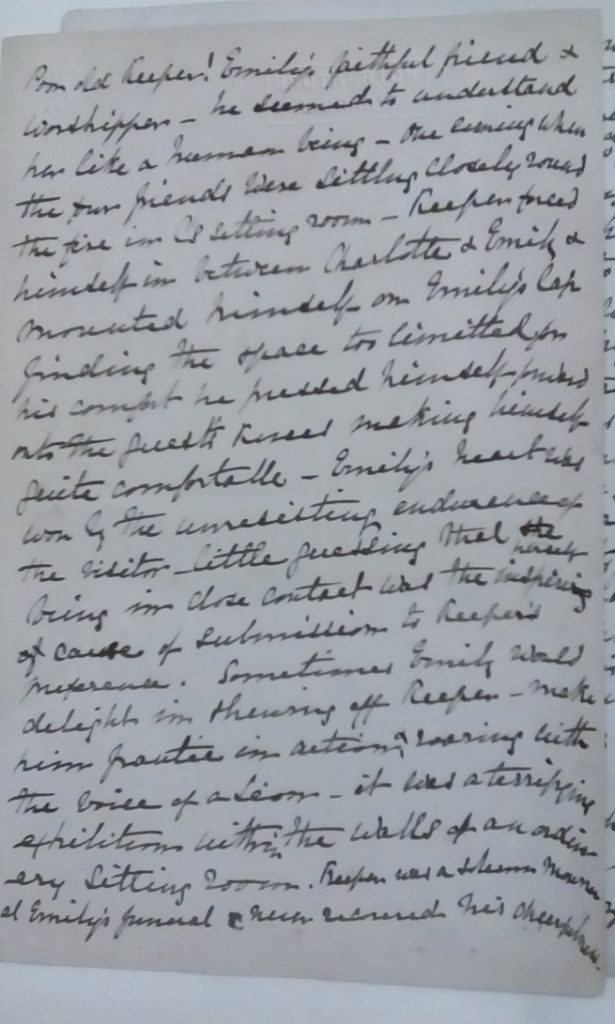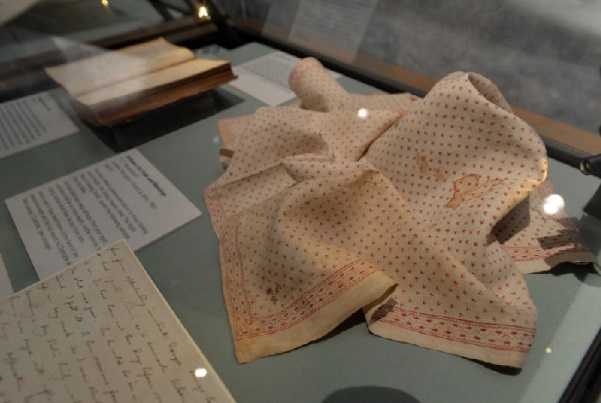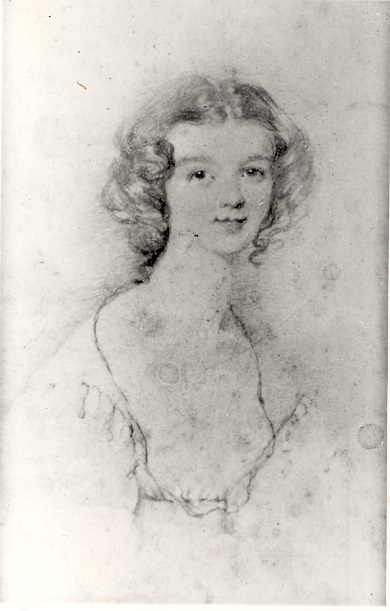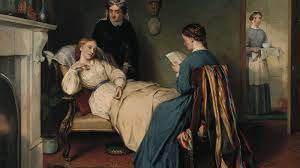After the tragic end to 1848 for the Brontë family those in Haworth Parsonage must have been hoping for a less testing start to 1849 – alas it was not to be, as we will see in today’s post thanks to the testimony of the great family friend Ellen Nussey.
Emily Brontë died, aged 30, in the week before Christmas and her funeral was a particularly solemn affair, with her pet mastiff Keeper leading the funeral procession: ‘He never regained his cheerfulness’, as Ellen recalled in a letter to Elizabeth Gaskell.

Christmas 1848 was a black-bordered time of mourning in the parsonage then, but there were fears for the future as well as tears for the past. Anne Brontë, Emily’s beloved younger sister, was also now showing the signs of consumption, what we today call tuberculosis. Her handkerchiefs, which Anne embroidered with her own initials, were held to her mouth during coughing fits – when removed, they were splattered with blood, as we see from the blood stained example in the Brontë Parsonage Museum collection.
Ellen Nussey had arrived at the parsonage on 28th December 1848, at the request of her best friend Charlotte Brontë. Whenever Charlotte’s spirits were at their lowest, it was Ellen that she called upon. Ellen remained in the parsonage over the new year, and was there on 5th January when Dr. Teale came to visit.

Teale had been called in by the Reverend Patrick Brontë. A renowned tuberculosis specialist, he had been asked to examine Patrick’s youngest daughter Anne – but by that time all in the family must have known what was coming.
Ellen described what happened next in her typical, and moving, understatement:
‘Anne was looking sweetly pretty and flushed, and in capital spirits for an invalid. While consultations were going on in Mr Brontë‘s study, Anne was very lively in conversation, walking around the room surrounded by me. Mr Brontë joined us after Mr Teale’s departure and, seating himself on the couch, he drew Anne towards him and said, “My dear little Anne.” That was all – but it was understood.’
The diagnosis had confirmed their worst fears. Anne had terminal tuberculosis, there was no hope for her. A crushing blow to start the year in Haworth, but Anne dealt with it with her characteristic and stoicism. This was the beginning of her great trial, but she refused to be bowed, and her faith and love remained strong to the end. Teale’s diagnosis also brought an end to Ellen’s visit to the parsonage, as he gave strict instructions that Ellen must leave the parsonage and return home – an instruction that may well have saved her from the infection, and saved her life.

I hope that your new year has started in more cheerful fashion. Anne’s story, indeed the Brontë story as a whole, is a reminder to us all that we never know what is coming – so we must all make the most of our talents and our dreams. Let this year be the year that your dreams come true, and I hope to see you again next Sunday for another new Brontë blog post.
